Most of the British and European nationals who came to India in the 18th and 19thcenturies were simply dismayed at its vast geographical dimensions, it’s cultural diversity and religious plurality. They could not believe that all thee could co-exist within one nation. It was not their fault. In its entire history Europe has witnessed, repeatedly, wars for the division of landmass and for redrawing of the boundaries defining nations on the basis of racial purity, religious considerations, cultural identity, language, petty political aspirations, and so on. To know the details one has just seen the causes of the evolution of feudalism in Europe from 7th to 15th centuries A.D. and then the political movements from the 18th century till the present. The break-up of countries like Yugoslavia, Czechoslovakia, and U.S.S.R. are the most recent examples of this phenomenon. 1
India’s immense inclusiveness was simply beyond the comprehension of the British and Europeans. They could not comprehend how a landmass of the size of almost the entire Europe (excluding Russia) could be one nation and how, sometimes, even a district of India could be bigger than a European nation or country. In order to overcome their lack of understanding, the British and European scholars proclaimed that India was not a nation but a conglomeration of nations. Articulating the British view, John Strachy wrote in 1880:
“This is the first and foremost thing to learn about India that there is not, and never was an India, or even any country of India possessing, according to European ideas, any sort of unity – physical, political, social and religious, no Indian nation, no ‘people of India’, of which we hear so much.” 2
To understand the view of John Strachy better we need to take a look at another description of India prepared by J.A. Dubois under the auspices of the East India Company. Dubois saw a large number of nations within a small geographical area. In his book, A Description of the Character, Manners and the Customs of the People of India; And of Their Institutions, Religious and Civil, Dubois writes:
“A good observer will remark, under general points of resemblance, as much different between a Tamil and a Telugu, between a Kanares and a Mahrata, as one would perceive in Europe between an Englishman and a Frenchman, an Italian and a German. There are countries in India peopled from time immemorial by different nations who, though, mixed together in same province and even in the same district, still preserved their distinct language, character, and national spirit. On the Malabar coast, for example, within a space of forty or fifty leagues from north to south, from Telichery to Onore or to Nagar, there are no less than five different nations peopling that small territory; and all of them appear to have been settled their upwards for a thousand years. These five nations are the Nairs or Naimars, the Kurgs or Kudagu, the Tuluvu, the Kaunguni and the Kanariese. These are not merely names of castes as might be supposed, but they distinguish five different nations, each of which is divided, like all of here Indian nation, into a variety of castes; and although these five races dwell in the same district, each has its peculiar language by which it is must be discriminated as by it, national customs, spirit and character.” 3
Thus, what Dubois is seeing is at least five nations within an area of just a few square kilometers.
In order to undermine the geographical and cultural unity of the country, the British spread the myths that India was never a nation and that it was they who united it politically and made it into a nation. Following the lead of the British, many historians and political scientists have also been advocating that India is not a nation, but a conglomeration of nations, and that the Indian people are nothing but a motley crowd of diverse groups with no history.
Perturbed by the vicious British canard that India was not a nation before the British took over as masters, the Father of the Nation wrote about the existence of the concept of Indian ‘Nation’ in his Hind-Swaraj. Exposing the fallacy of the British view Gandhiji wrote:
“The English have taught us that we were not a nation before and it will require centuries before we become one nation. This is without foundation. We were one nation before they came to India. One thought inspired us. Our mode of life was the same. It was because we were one nation that they were able to establish one kingdom. Our leading men traveled throughout India either on foot or in bullock-carts… What do you think could have been the intention of those farseeing ancestors of ours who established Setubandh (Rameswaram) in the south, Jagnnath in the east and Haridwar in the north as places of pilgrimage? You will admit that they were no fools. They knew that worship of God could have been performed at home. They taught us that those whose hearts were aglow with righteousness had the Ganga in their own homes (mana changa to kathauti mein Ganga). But they saw that India was one undivided land so made by nature. They, therefore, argued that it must be one nation. Arguing thus, they established holy places in various parts of India and fired the people with the idea of nationality in a manner unknown in other parts of the world.” 4
Almost at the same time R.K. Mookerjee wrote an article, ‘Fundamental Unity of India’ (1909), underlining the existence of the concept of nation in Ancient India. This was published in the form of a book under the same title in 1913. While dealing with the issue of nationalism, Mookerjee wrote:
“India was preaching the gospel of nationalism when Europe was passing through what has been aptly called the Dark Age of her history, and was labouring under the travails of a new birth.” 5
The vast landmass that today forms the countries of Afghanistan, Pakistan, Bangladesh and India was known in the past as Bharatavarsha, the land of the Bharatas (after the RigVedic people, Bharatas), and its people were called Bharatasantat. This land was bounded on the north by the Himalayas and by the ocean in the south. It formed the southern part of Jambu-dvipa. The geographical unity of India is clearly visible on the map showing how the country is sharply separated from the rest of the world by almost inviolable boundaries, very much unlike the disputed frontiers artificially settled between most countries of Europe.
The first definite mention of Bharata as a country (desha) and as a nation (rashtra) is found in Panini, who lived about the 7th century B.C. The Buddhist literature speaks of seven regions of Bharata (Sapta-Bharatas). The Puranas expressly define the term Bharatavarsha as:
“The country that lies north of the ocean (i.e. the Indian Ocean) and south of the snowy mountains (Himalayas), marked by seven main chains of mountains, viz. Mahendra, Malaya, Sahya, Suktimat, Riksha (mountains of Gondwana), Vindhya, and Pariyatra (western Vindhyas up to the Aravallis); where dwell the descendants of the Bharatas, with the Kiratas (barbarians) living to its east, the Yavanas (Ionians or Greeks) to its west, and its own population consisting of the Brahmanas, Kshatriyas, Vaisyas, and Sudras (i.e. the Hindus).” 6
But Bharatavarsha is not a mere geographical expression like the name India. It has much deeper historical significance, indicating the country of the great Bharatas of the RigVeda. It carries with it their deepest sentiments of love and service as expressed in their literature. One of the commonest prayers of a Hindu requires him to recall and worship the image of his mother country as the land of seven sacred rivers – the Ganga, the Yamuna, the Godavari, the Sarasvati, the Narmada, the Sindhu, and the Kaveri – which between them cover its entire area. Another prayer draws up its image as the land of seven sacred cities, Ayodhya, Mathura, Maya (modern Hardwar), Kashi, Kanchi (Conjeeveram), Avantika (Ujjain), and Dvaravati (Dwarka), located in distant parts of the country covering virtually the whole of it (Mahabharata, Bhishmaparvan).
The other important holy places mentioned in the sacred literature are Kailash Manasarovar in the north in the Himalayas, Hingulage in Baluchistan in the west, Kanyakumari in the south and Parashuramakunda in Arunanchal Pradesh in the east. The peculiar Hindu institution of pilgrimage further sustains the spirit of these prayers. It exhorts Hindus to visit the holy places associated with their faith. Each principal Hindu faith or sect like Vaishnava, Saiva, Sakta, etc. has its own list of holy places’ and these places are distributed throughout the length and breadth of India. They are not huddled up in a single province. Thus, the different sects within Hinduism are one in enjoining upon their respective followers a pilgrimage to the different and distant parts of India, and thereby, they foster in them a vibrant perception of what constitutes their common mother country.
In the same spirit, Adi Shankaracharya established his four Mathas at four extreme points of the country viz. Jyotir matha in the north (near Badri-Kedarnath in the Himalayas), Sharada matha at Dwarka in the west, Govardhana matha at Puri in the east, and Shringeri matha at Mysore in the south. The existence of different sects within Hinduism is thus a unifying aid to Indian nationalism. In some of the sacred texts like Shrimad Bhagavata Purana and Manu Smriti, there are passages full of patriotic fervour describing Bharatavarsha as the land fashioned by the gods themselves (devanirmitam sthanam), who even wish to be born here and be blessed with the spiritual pursuit that is eternal in its environment. And above these are the culminating utterance –– “Mother and Mother-Country are greater than Heaven!” (Janani janmabhumischa svargadapi gariyasi).
All these prayers and praises showered on the motherland show that the Hindus have elevated patriotism to the level of a religion. In the foreword to R.K. Mookerjee’s The Fundamental Unity of India, late Sir J. Ramsay MacDonald, ex-Prime Minister of Britain writes:
“The Hindu regards India not only as a political unit naturally the subject of one sovereignty – whoever holds that sovereignty, whether British, Mohamedan, or Hindu – but as the outward embodiment, as the temple – nay, even as the goddess mother – of his spiritual culture… He made India the symbol of his culture; he filled it with this soul. In his consciousness, it was his greater self.” 7
The concept of a single political unit (or the absence of it) of this entire land never bothered the people of this country, though at one place Aitereya Brahmana (VIII.15) says, “There should be one ruler of this land (nation) up to the sea.” But to the people of this country, what mattered was cultural nationalism. Still we find that the political aspect of nationalism was not completely overlooked. Kautilya in his Arthashashtra (4th century B.C.) says that a Chakravarti king is the one who has conquered the whole of Bharatavarsha, which he defines as the land between the Himalayas in the north and the ocean in the south, and it measures one thousand yojana (eight thousand miles) from east to west. 8
Kautilya’s visualization of one huge political entity of a nation was neither an empty dream nor wishful thinking when we look at the Rock and Pillar Edicts of Ashoka’s empire of early 3rd century B.C. Was India not one nation then – from Afghanistan to Assam and from Nepal Tarai to Mysore? Ashokan edicts mention south Indian dynasties like Cheras, Cholas and Pandyas. Such concepts do not emerge overnight. It must have taken several hundred years to develop the kind of nation-empire which Kautilya visualized, and Chandragupta Mauraya and his grandson Ashoka gave a physical form. Aitereya Brahmana (VIII.15) says, “There should be one ruler of this land (nation) up to the sea.”
As said earlier, one political power, one language, one dress, etc. have never been the pre-requisites of Indian nationhood. The Prithvi Sukta of RigVeda declares that “the people inhabiting this land speak different dialects, and follow different norms of behaviour according to their own region, but this motherland just like a cow, feeds them all with her milk without any distinction.” Still, we see that by the 4th century B.C., Prakrit appears to be a sort of lingua franca of India, which is indicated by the language of Ashokan edicts found from Afghanistan to Orissa and Nepal Tarai to Mysore.
The concept of Indian nationhood has been best summed up by the great Congress leader and intellectual, Bipin Chandra Pal. He says:
“National differentiation among us, therefore have not been based upon territorial demarcations only, or upon political or economic competitions and conflicts, but upon differences of culture… And that special character [i.e. culture] is the very soul and essence of what we know and understand as Nationalism. This is by no means a mere political idea or ideal. It is something that touches every department of our collective life and activity. It is organized in our domestic, our communal, our social and our socio-economic institutions. In fact, politics form, from some point of view, the least important factor of this nation-idea among us. The so-called political institutions of Europe might, indeed, hinder, instead of helping the growth of our national life; while under conceivable conditions, mere political subjection might not be able to touch even the outer most fringe of that life.” 9
Prof. C.J.H. Hayes is the one scholar who has virtually spent his lifetime studying terms like ‘country’, ‘nation’ and ‘nationalism’. Endorsing virtually what Gandhiji and B.C. Pal had said about India as a country/nation, C.J.H. Hayes shows evidence of such a phenomenon at a global level. He writes:
“In simplest terms nationalism may be defined as a fusion of patriotism with consciousness with nationality… A nationality receives its impress, its character, and its individuality from cultural and historical forces… Historical tradition means an accumulation of remembered or experiences of the past… Patriotism is peoples’ loyalty towards their territorial past, its ancestral soil, involving a popular sentimental regard for a homeland where ones forefathers lived and are buried or cremated… If we are to grasp what a nationality is, we must avoid confusing it with a state or nation… Cultural nationalism may exist with or without political nationalism. For, nationalities can and do exist for fairly long periods without political unity and independence.” 10
Regarding India as a country, as a nation and about Indian nationalism, Pt. Jawaharlal Nehru had also reached the same conclusion as Gandhiji, Bipin Chandra Pal, R.K. Mookerjee and C.J.H. Hayes. In his Discovery of India he writes:
“India was in my blood and there was much in her that instinctively thrilled me. And yet I approached her almost as an alien critic… To some extent I came to her via the West and looked at her as a friendly Westerner might have done.” 11
But this critical approach did not prevent Nehru from recognising the true India as a nation, and it did not even take long. He seems to have remained very unaffected by the British rhetoric that India had no significant past, it was never a nation, and that Indians were a ragtag and bobtail conglomeration with no common bond among them. Nehru writes:
“As I grew up and became engaged in activities which promised to lead India’s freedom, I became obsessed with the thought of India. What was this India which possessed me and beckoned continually… What was this India apart from her physical and geographical aspects.” 12
After describing his journeys all over the country with a view to know her and learn about India and Indian literature, Nehru writes:
“These journeys and visits of mine, with the background of my reading gave me an insight into the past. To a somewhat bare intellectual understanding was added an emotional appreciation and gradually a sense of reality began to creep into my mental picture of India, and the land of my forefathers became peopled with living beings, who laughed and wept, loved and suffered; and among them were men who seemed to know life and understand it; and out of their wisdom they had built a structure which gave India a cultural stability which lasted for thousands of years… These seem to me something unique about the continuity of a cultural tradition through five thousand years of history.” 13
In Nehru’s opinion, this cultural aspect of India is precisely the definition of India, the Indian nation and Indian nationalism. In the chapter, ‘Nationalism and Internationalism’ in the Discovery of India, he writes:
“It (nationalism) still is one of the most powerful urges that moves a people and round it cluster sentiments and traditions and a sense of common living and common purpose… Old established traditions cannot be easily scrapped or dispensed with; in moments of crisis they rise and dominate the minds of men. Traditions have to be accepted to a large extent… The nationalist idea is deep and strong; it is not a thing of past with no future significance… The abiding appeal of nationalism to the spirit of man has to be recognized and provided for.” 14
Jawaharlal Nehru, citing an example from the Indian history itself, talks about the importance of nationalism. Describing the events leading to the establishment of the Mauryan empire, he says:
“Soon news came of Alexander’s death at Babylon in 323 B.C., and immediately Chandragupta Maurya and Chanakya raised the old and ever-new cry of nationalism and roused the people against the foreign invader. The Greek garrison was driven away and Taxila captured. The appeal to nationalism had brought allies to Chandragupta and he marched with them across north India to Pataliputra. Within two years of Alexander’s death he was in possession of that city and kingdom, and the Maurya empire had been established.” 15
Now, the question that needs to be seriously addressed is whether Jawaharlal Nehru wrote all that merely as an intellectual exercise. No, definitely not. Nehru himself discloses what he learnt from this quest for knowledge as to what India is beyond its geography and physical features. He says:
“That vision of five thousand years gave me a new perspective, and the burden of the present seemed to grow lighter.” 16
This is Jawaharlal Nehru talking about the continuity of India as a nation, Indian nationalism, and Indian culture in terms of 5,000 years (and he was writing this in 1942 when a lot of the evidence proving the Indian civilisation to be older than 5,000 years was not yet known).
References
1. Most the European countries have faced break-up on the question of identities based on family lineage, language, regions, dialects, colour of eyes, height of nose etc. During the age of feudalism most of the kingdoms/nations came into existence on the basis of allegiance shown to certain families of the ruling clans.
2. John Strachy, Expansion of the British Empire, London.
3. J.A. Dubois, 1879, A Description of the Character, Manners and the Customs of the People of India; And of Their Institutions, Religious and Civil (edited by G.U. Pope), London.
4. Mahatma Gandhi, 1909. Hind-Swaraj. Navajivan Press, Ahmedabad. Also included in the Collected Works of Mahatma Gandhi, Vol. 9, Publication Division, Govt. of India, New Delhi.
5. R.K. Mookerjee, 1921, Nationalism in Hindu Culture, 1921, London (second revised edition 1957, New Delhi).
6. Vayu Purana, 45.75; Vishnu Purana 2.3.24; Mahabharata. (Bhismparva).
7. J. Ramsay MacDonald, 1919, ‘Foreword’ to R.K. Mookerjee’s The Fundamental Unity of India, p. 47, London, 1913.
8. Arthashashtra, 9.1.135-36.
9. Bipin Chandra Pal, 1913, Hindu Review (May Issue), (Calcutta), reprinted in Nationality and Empire, pp. 21-72, Calcutta (1916).
10. C.J.H. Hayes, 1960, Nationalism: A Religion, pp. 2-6, New York.
11. Jawaharlal Nehru , 1946, The Discovery of India, p. 37, Oxford.
12. ibid, p. 36.
13. ibid, pp. 38-39.
14. ibid, pp. 39-40.
15. ibid, p. 112.
16. ibid., p. 40.----------------------------------------
Published Date : 31th May, 2011

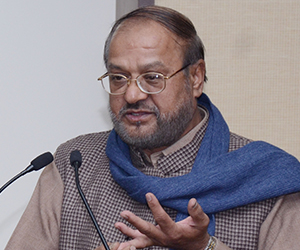

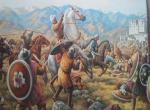
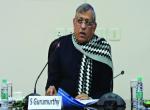
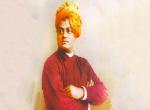
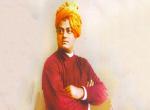
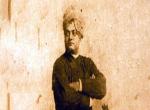
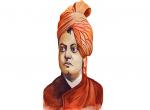
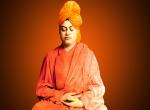
Post new comment